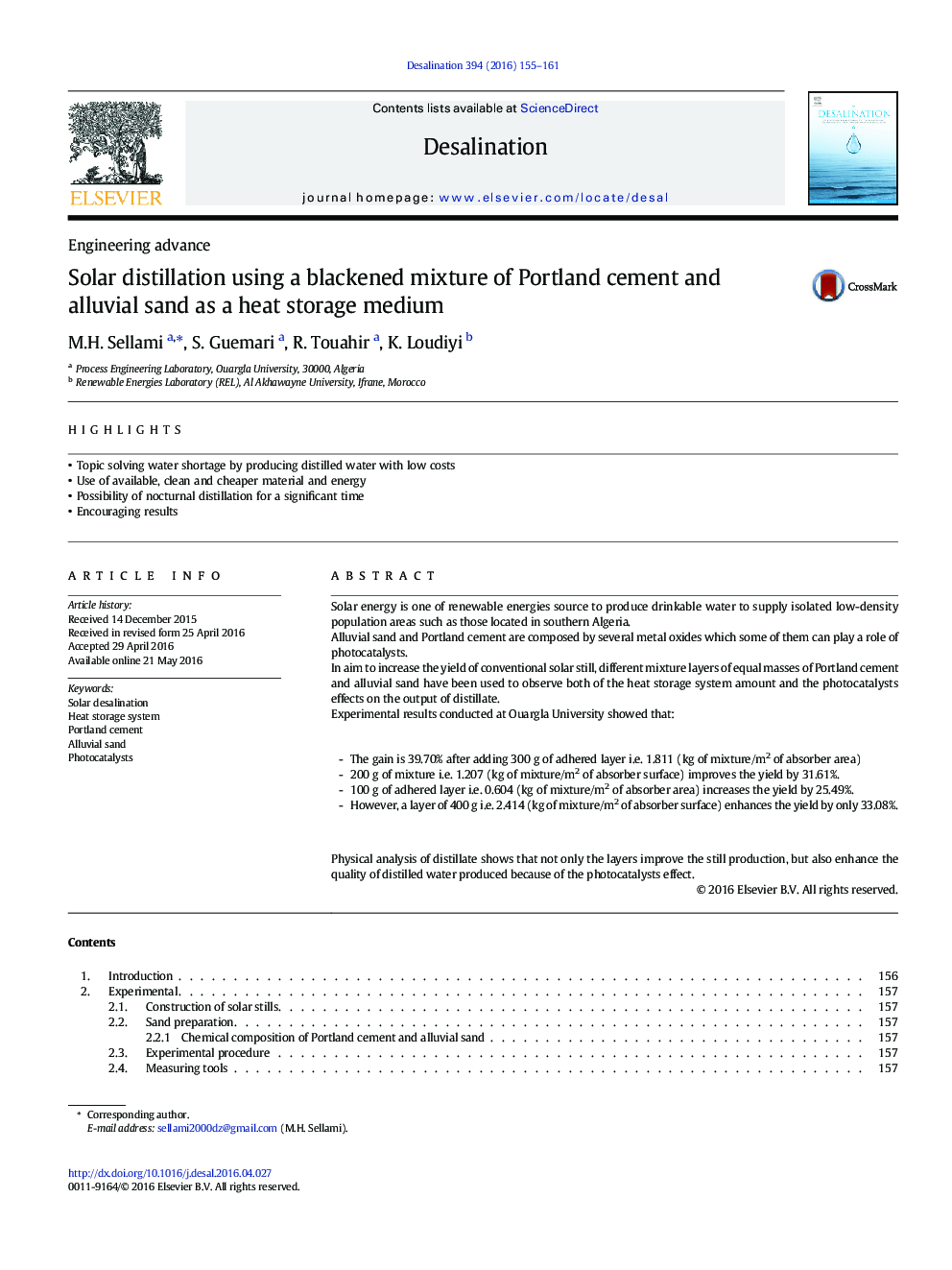| کد مقاله | کد نشریه | سال انتشار | مقاله انگلیسی | نسخه تمام متن |
|---|---|---|---|---|
| 622736 | 1455301 | 2016 | 7 صفحه PDF | دانلود رایگان |
کلمات کلیدی
1.مقدمه
2.آزمایشات
2.1 ساخت عکس های خورشیدی
2.2 آماده سازی شن و ماسه
2.2.1 ترکیب شیمیایی سیمان پرتلند و شن و ماسه
2.3 روش تجربی
2.4ابزارهای اندازه گیری
جدول 1. ترکیب اکسید تقریبی محدود به شن و ماسه آلیاژی [19].
جدول 2. میانگین درصد وزنی ترکیب اکسیدی برای سیمان پرتلند [20].
3. نتایج و بحث
شکل 1. برش مقطعی از محفظه ی خورشیدی.
شکل 2. اندازه گیری دمای نمونه خورشیدی و دمای محیط در مقابل زمان محلی .
شکل 3. منحنی های مختلف اندازه گیری دما برای 100 گرم مخلوط باقی مانده در مقابل
شکل 4. تفاوت بین آب جذب و درجه حرارت پوشش شیشه ای در مقابل محلی
4. محاسبه تخمینی از ماسه آبی وهزینه های تولید آب
4.1 هزینه های شن و ماسه مصنوعی
4.2 هزینه تولید آب مقطر
شکل 6. مخلوط کبالت تقطیر برای تمام واحدها در مقابل زمان محلی.
5. نتایج تجزیه و تحلیل آب
جدول 3 . نتایج تجزیه و تحلیل آب
6. نتیجه گیری
راهنما
• Topic solving water shortage by producing distilled water with low costs
• Use of available, clean and cheaper material and energy
• Possibility of nocturnal distillation for a significant time
• Encouraging results
Solar energy is one of renewable energies source to produce drinkable water to supply isolated low-density population areas such as those located in southern Algeria.Alluvial sand and Portland cement are composed by several metal oxides which some of them can play a role of photocatalysts.In aim to increase the yield of conventional solar still, different mixture layers of equal masses of Portland cement and alluvial sand have been used to observe both of the heat storage system amount and the photocatalysts effects on the output of distillate.Experimental results conducted at Ouargla University showed that:-The gain is 39.70% after adding 300 g of adhered layer i.e. 1.811 (kg of mixture/m2 of absorber area)-200 g of mixture i.e. 1.207 (kg of mixture/m2 of absorber surface) improves the yield by 31.61%.-100 g of adhered layer i.e. 0.604 (kg of mixture/m2 of absorber area) increases the yield by 25.49%.-However, a layer of 400 g i.e. 2.414 (kg of mixture/m2 of absorber surface) enhances the yield by only 33.08%.Physical analysis of distillate shows that not only the layers improve the still production, but also enhance the quality of distilled water produced because of the photocatalysts effect.
Journal: Desalination - Volume 394, 15 September 2016, Pages 155–161
